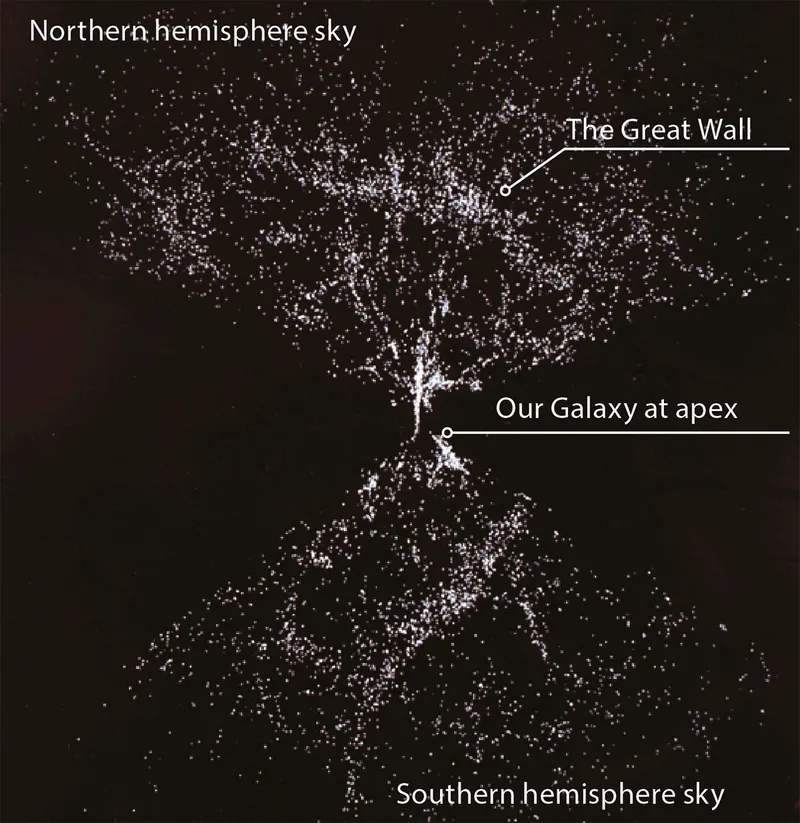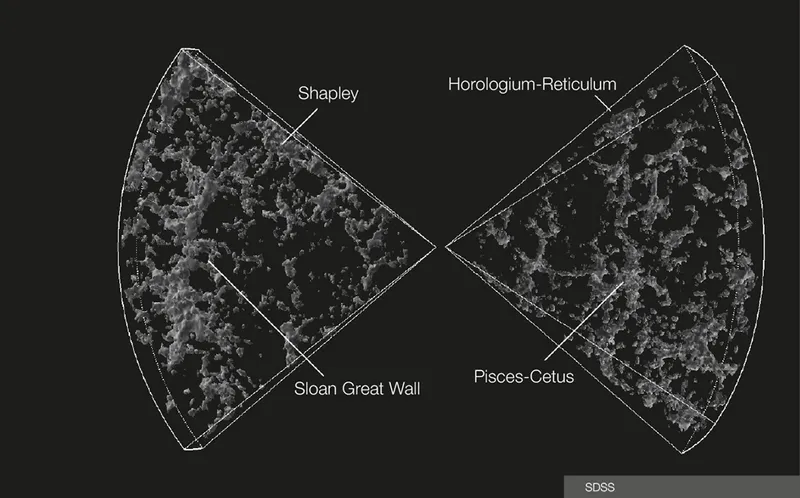The CfA2 Great Wall is the second biggest concentration of galaxies in the known Universe. It was discovered in 1989 by American astronomers Margaret Geller and John Huchra.
They were looking at data from the CfA Redshift Survey, which revealed the 3D distribution of galaxies in a particular section of the sky.
The astronomers spotted a gigantic ‘filament’ of galaxies about 200 million lightyears away, which has since been dubbed the Great Wall.
Discover the biggest things in the Universe and a history of 3D mapping the Universe

The filament is about 300 million lightyears wide, 15 million lightyears thick and it snakes for at least 500 million lightyears across the Universe.
In fact, the Great Wall may be even longer but, because it intersects the plane of our Milky Way, dust is blocking our view of its true extent.
The Great Wall isn’t a ‘supercluster’ like the Virgo Supercluster, in which many galaxy clusters are bound together by gravity.
It is merely a region through which a large number of galaxies are moving.
Other Great Walls are available...

There are hints from other galaxy surveys that other Great Wall-type structures exist further out in the Universe.
In 2003, astronomers discovered the Sloan Great Wall, one of the biggest known structures in the Universe, a billion lightyears away and 1.4 billion lightyears long.
And, of course, there's the famous Hercules-Corona Borealis Great Wall, thought to be the biggest known structure in the Universe.

The existence of structures as large as the Great Wall is difficult to explain because there has been so little time since the Big Bang for gravity to pull together such vast quantities of matter.
Cosmologists have been forced to propose that the Universe contains six to seven times as much invisible matter as visible stars and galaxies.
The additional gravity of this ‘dark matter’ would then have speeded up the process of structure formation, allowing more matter to be pulled together faster.
Dark matter seems to have congealed into structures before ordinary matter did.
The latest surveys of dark matter show the visible galaxies peppering the dark matter like a sprinkling of snow on the tops of mountains.
Significantly, dark matter appears to form a web-like structure, with filaments just like the Great Wall.
